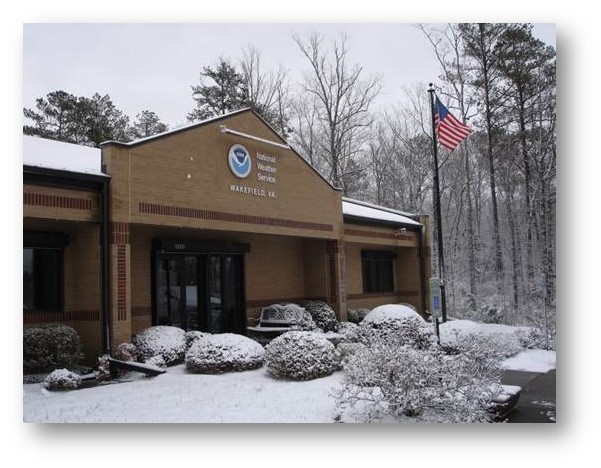Winter Weather Preparedness Week for Virginia
December 8 - 12, 2025
Please join us in promoting winter weather safety during this year's "Winter Weather Preparedness Week". The National Weather Service asks emergency management, public safety officials, local media and Weather-Ready Nation Ambassadors to help join forces in improving the nation's readiness, responsiveness, and overall resilience against extreme weather during the winter weather season.
Each day this week, a different topic will be covered. Click on the tabs below for more winter weather preparedness information.
Monday
Winter Season Outlook and winter weather terminology
This will provide you with some terms the National Weather Service uses to describe winter weather as well as the definitions of watches, warnings, and advisories issued for winter weather events.
|
Watches are issued when a storm is in it's early stage of development, and may create conditions that may harm life and property. Hazardous winter weather is only a possibility, not a certainty. The following are the watch headlines issued for winter weather events:
|
|
Warnings are issued when the threat to life and property is imminent or has already begun from severe winter weather. The following are the warning headlines issued for winter weather events:
|
|
Advisories are issued for less serious weather conditions that will not cause immediate threat to life and property. Advisories will be issued when weather conditions will impact motorists, outdoor activities, or public events. These events could become life-threatening if proper precautions are not taken. The following are the advisory headlines issued for winter weather events:
|
Winter infographics
Tuesday
Winter Storms affecting Virginia
The most dangerous winter weather systems for Virginia, which can produce major amounts of snow and ice, are strong coastal low pressure systems known as nor'easters. These types of storms can impact the region a couple times a season and when the temperatures are cold enough, these types of storms can produce big snowfall events. For example, the winter storm of January 3, 2022, was a high-impact event that affected a large portion of Virginia. Temperatures were in the 60s across much of the Commonwealth before snow began falling during the early morning hours of January 3rd. Snow continued through much of the day with rates of 1 to 2+ inches per hour for several hours during the peak of the storm. This allowed snow to quickly accumulate on all area roadways, including on I-95. A widespread 8 to 14 inches of heavy, wet snow fell across the central Virginia Piedmont, Northern Neck, and into portions of Northern Virginia. 3 to 6 inches fell in most of the Richmond Metro area, with little to no snow across southeast portions of the Commonwealth.
Key Impacts:
Unprecedented Closure of Interstate 95: The excessive, heavy snowfall and high number of disabled vehicles led to the complete closure of a significant portion of Interstate 95 in the Fredericksburg area. Thousands of motorists were stranded for over 24 hours.
Widespread Power Outages: The weight of the heavy, wet snow combined with strong northeast winds downed numerous trees and power lines across central and northern Virginia. At the peak of the storm, nearly 450,000 residents across the state were without power. 70–90% of customers lost electricity in the hardest hit counties.
Coastal Flooding: The strong, persistent onshore flow resulted in moderate to major tidal flooding in the Lower Chesapeake Bay and the Atlantic coast of Southeast Virginia, with water levels in some locations eclipsing those seen during Hurricane Dorian.
Winter storms can make driving and walking extremely dangerous. The aftermath of a major winter storm can have a devastating impact for days or even weeks. Winter storms can be deceptive killers because most deaths are indirectly related to the storm. People die in traffic accidents on icy roads, have heart attacks while shoveling snow, or succumb to fires or carbon monoxide while trying to heat their home improperly. With proper planning and preparation, you can limit or even mitigate the impacts from winter storms.
Lastly for today, The National Weather Service needs accurate snowfall measurements during winter storms. Those accurate snowfall measurements help us to adjust continually update the forecast and warnings during the event. Are you willing to be a snow observer to help the NWS? Below is graphic that shows you how to take an accurate snow measurement. Once you have your report, you can send it to your local NWS office in Wakefield, VA by:
Wednesday
Excessive Cold and Preparing your home for winter
Cold weather is a fact of winter. Up until this winter, the NWS only warned for low wind chill temperatures. But for much of Virginia, our coldest times occur at night with light to calm winds. However, starting this winter, the NWS will now issue warnings for when it is extremely cold air is in place, with or without wind. So no longer will the NWS issue Wind Chill Warnings or Advisories, but instead will issue Extreme Cold Warnings and Cold Weather Advisories. The chart below shows the names of the old products and what the NWS will be issuing now when the temperatures or wind chills drops to excessively low values.
The temperature guidance that will be the NWS used to issue these new products will vary across the state to line up with the climatology of the region. The values that will be used are linked here for the Extreme Cold Warning and Cold Weather Advisory.
With the cold temperatures comes an increase in the number of house fires. House fires resulting from heating material within the home ranks second for the most deaths and property loss. Chimney fires are the number one cause of home heating fires and typically the result of a poorly maintained chimney where creosote is allowed to build up. Space heaters are typically involved in 25 percent of home heating fires and account for 74 percent of the deaths. Be sure to test smoke and carbon monoxide detectors and replace any broken detectors and dead batteries.
Severe winter storms can produce conditions which can isolate you in your home for several days. Prolonged loss of power can severely limit your ability to heat your home. Also obtaining supplies, food and other necessities can be hampered or prevented by poor road conditions. Make sure to stock an emergency supply of food and water prior to the onset of a winter storm. Include food items which require no cooking such as canned meats, peanut butter and other non-perishables. Also do not forget to have necessary medicines and baby items on hand. A three to five day supply of food and medicine is generally sufficient. A lot of these items may already be in your home from your hurricane kit.
Example home emergency supply kit
Winter infographics
Thursday
Dangers associated with freezing rain and sleet
Ice falling in the form of freezing rain is particularly dangerous and poses a variety of problems. The ability of freezing rain to accumulate on nearly every surface, including trees, power lines, and bridges, makes it one of the most dangerous forms of winter weather. As little as a quarter of an inch of freezing rain can create widespread power outages. Just 2 winters ago, central and southern portions of Virginia saw one of the worst ice storms in the last 20 years. On February 12 - 13, 2021 a long period of light to moderate rain developed and fell into areas with surface temperatures around 30 degrees. This lead to trees and powerlines being coated in ice and eventually lead to widespread power outages that took nearly two weeks to be fully repaired in some locations
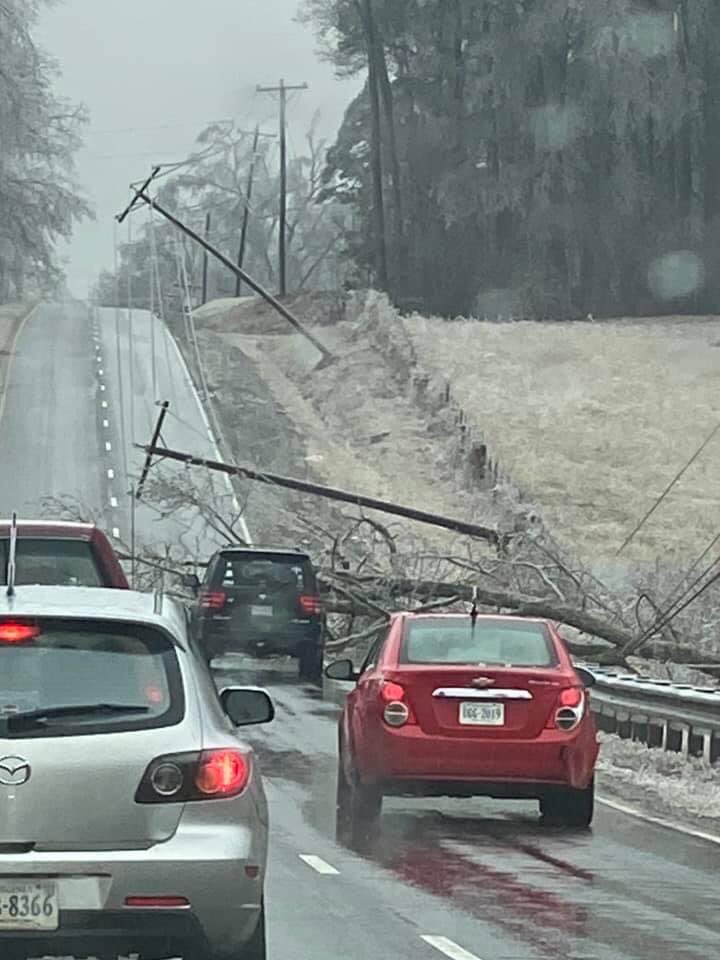
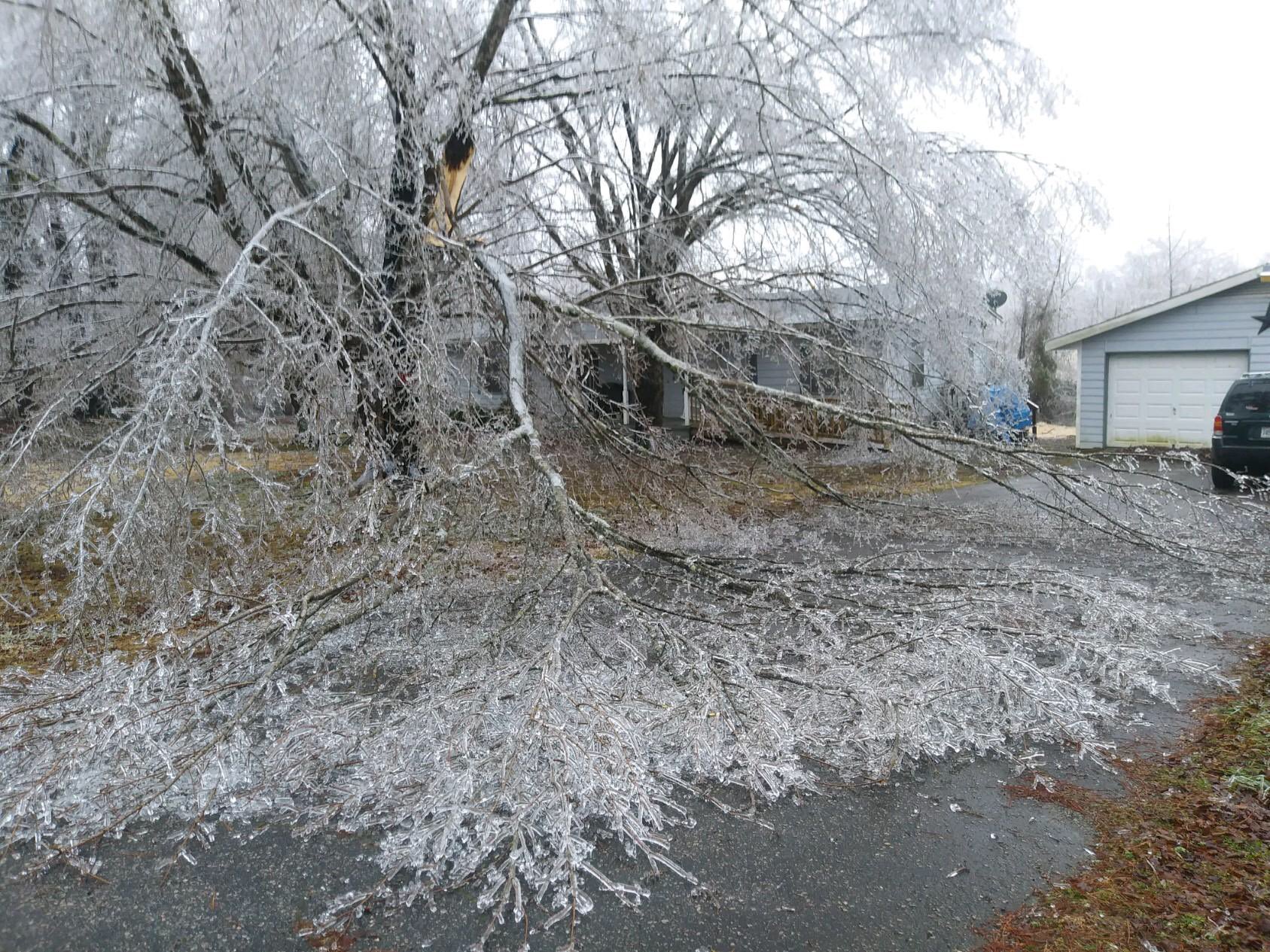
Power Outages at peak of storm Icing in Crewe, VA Icing in Lunenburg County, VA
(credit: PowerOutage.us) (credit: @wx_Jpeg - Twitter) (credit: @wx_Jpeg - Twitter)
When driving, ice can be very difficult to recognize. The roadway may appear to be wet when in reality when appears to be water may actually be ice. If the temperature outside is below freezing, ice can form on the roads, especially on bridges and overpasses. When encountering ice, do not panic and do not stomp on your brakes. It is safer to slowly decelerate to a stop.
Winter infographics
Friday
Driving in winter weather
Seventy-five percent of all winter weather related deaths occur on the road, either in accidents or by people becoming stranded. When the weather is bad and driving conditions are poor, the best bet is to stay at home
Winter infographics
Winter Weather Video Series – Weather You Want to Know (or not)
Frequently Asked Questions
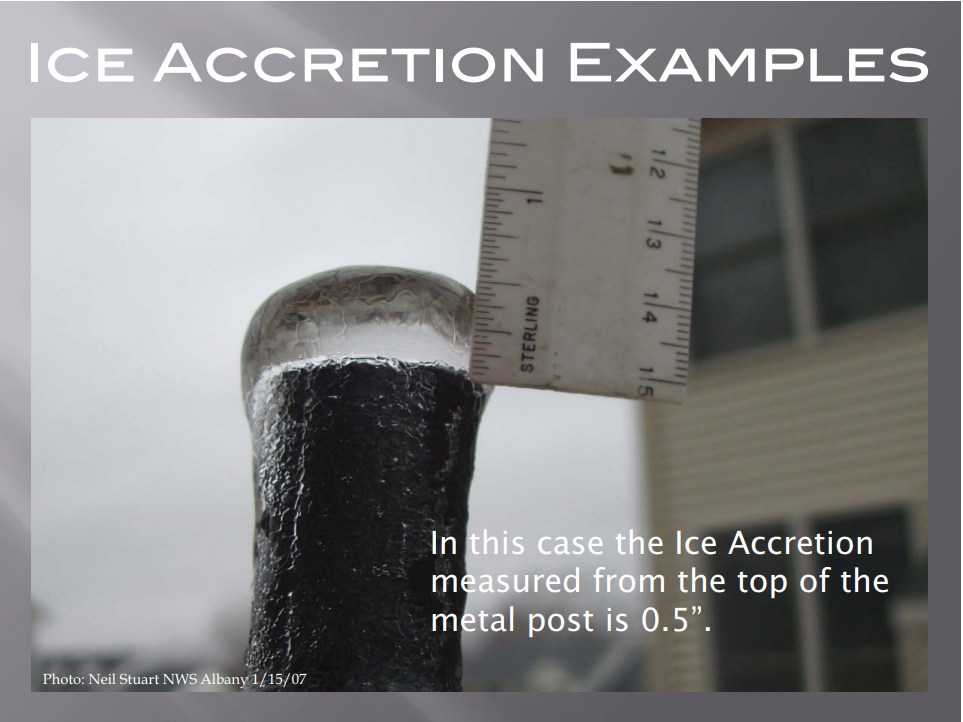
You can also send your snow or ice report to NWS Wakefield using our Storm Report Form!
What items should be included in a vehicle Winter Storm Kit?
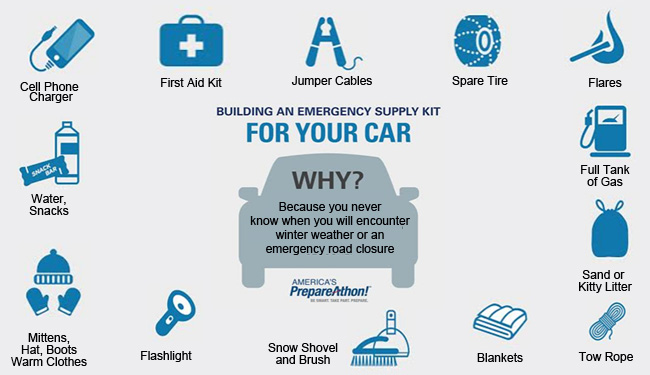
Get more information at build your winter storm kit and prepare for cold weather.
What is the polar vortex?
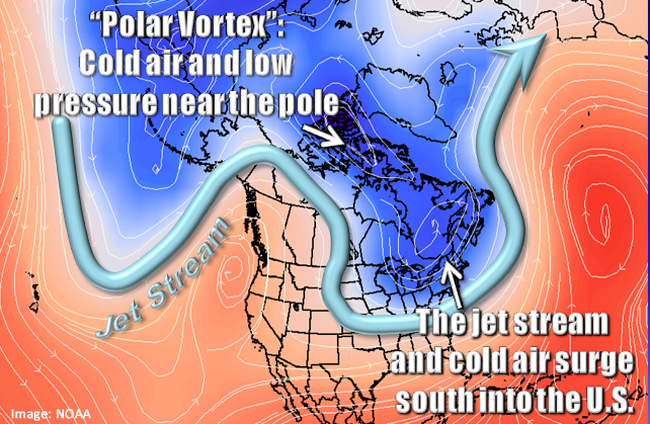
The polar vortex is a large area of low pressure and cold air surrounding both of the Earth’s poles. It ALWAYS exists near the poles, but weakens in summer and strengthens in winter. The term "vortex" refers to the counter-clockwise flow of air that helps keep the colder air near the Poles. Many times during winter in the northern hemisphere, the polar vortex will expand, sending cold air southward with the jet stream (see graphic above). This occurs fairly regularly during wintertime and is often associated with large outbreaks of Arctic air in the United States.
Get more information at: Polar Vortex FAQ.
What is Wind Chill, and how is it calculated?
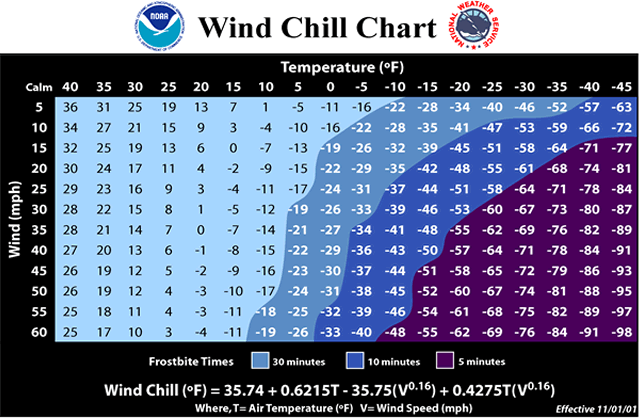
Wind Chill is how cold people or animals feel when outside. Wind chill is based on the rate of heat loss from exposed skin caused by wind and cold. As the wind increases, it draws heat from the body, driving down skin temperature and eventually the internal body temperature. Therefore, the wind makes it FEEL much colder. If the temperature is 0°F and the wind is blowing at 15 mph, the wind chill is -19°F. At this wind chill temperature, exposed skin can freeze in 30 minutes. The wind chill temperature is calculated using the following formula:
Wind chill (ºF) = 35.74 + 0.6215T - 35.75(V^0.16) + 0.4275T(V^0.16)
Where: T = Air Temperature (F)
V = Wind Speed (mph)
^ = raised to a power (exponential)
Wind chill Temperature is only defined for temperatures at or below 50°F and wind speeds above 3 mph. Bright sunshine may increase the wind chill temperature by 10°F to 18°F.
More information on Wind Chill is included at Wind Chill FAQs.
What is the difference between frostbite and hypothermia?
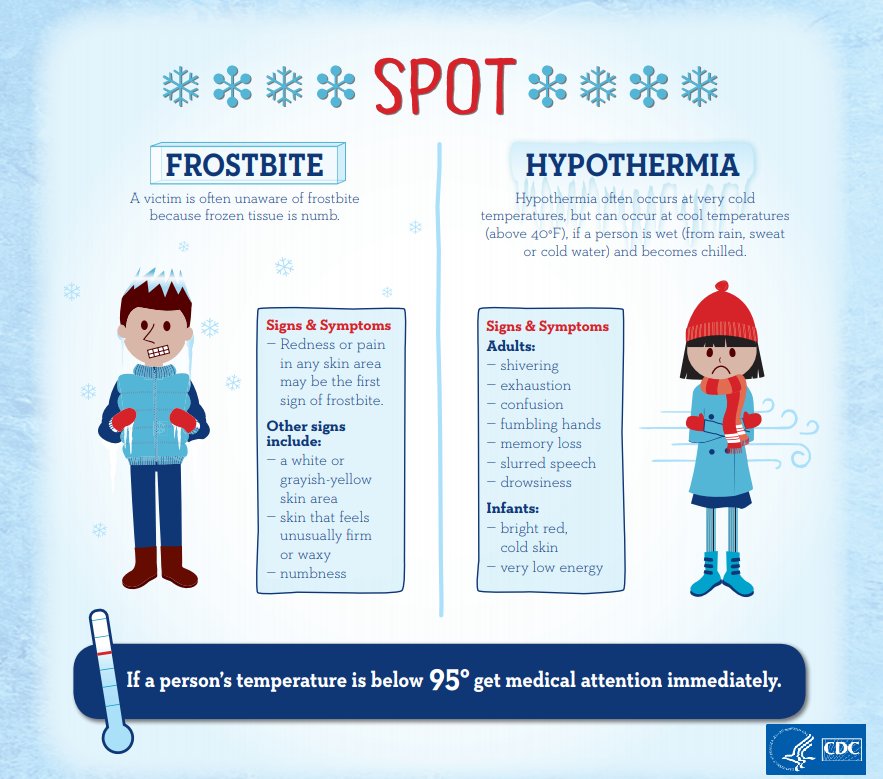
What is meant by black ice?
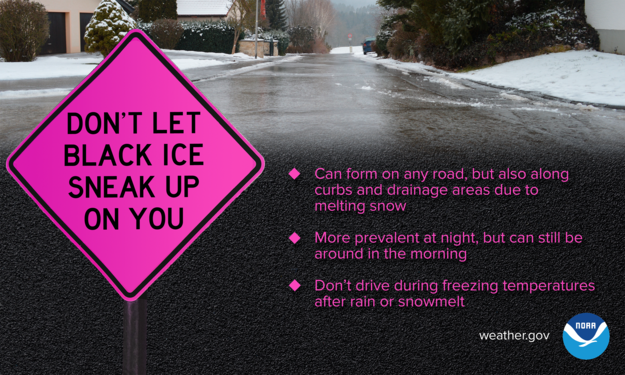
Why do bridges and overpasses freeze before other surfaces?
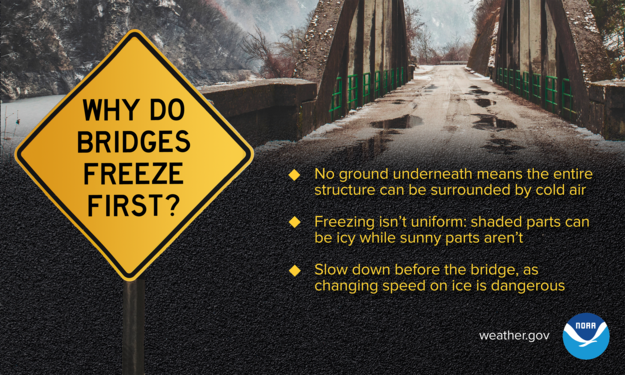
What is a snow squall, and what is the difference between a snow squall and a snow storm?
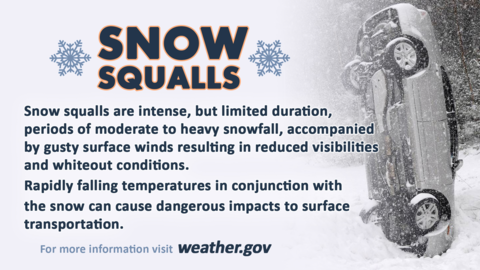
The difference between a snow squall and a snowstorm really just comes down to the duration of the event. Snow squalls are usually very short-lived (on the order of 30-60 minutes) and extremely intense. A snow storm could last for several hours or even days. More information is available at Snow Squall FAQ.
What is the Winter Storm Severity Index (WSSI)?
The Winter Storm Severity Index (WSSI) is a spatial assessment of the societal impacts of winter storms. It highlights regions and localities with the forecasted potential of damaging and life-threatening effects brought on by winter weather. This includes, but is not limited to tree damage, school closures, transportation issues like flight cancellations, traffic accidents, and road closures. These winter storms can create a direct risk to life and property and cause millions of dollars in damages. For additional information on WSSI click here.
Find us on social media:
You can also contact:
Eric Seymour (Eric.Seymour@noaa.gov) for additional information about Virginia's 2024 Winter Weather Awareness Week.
